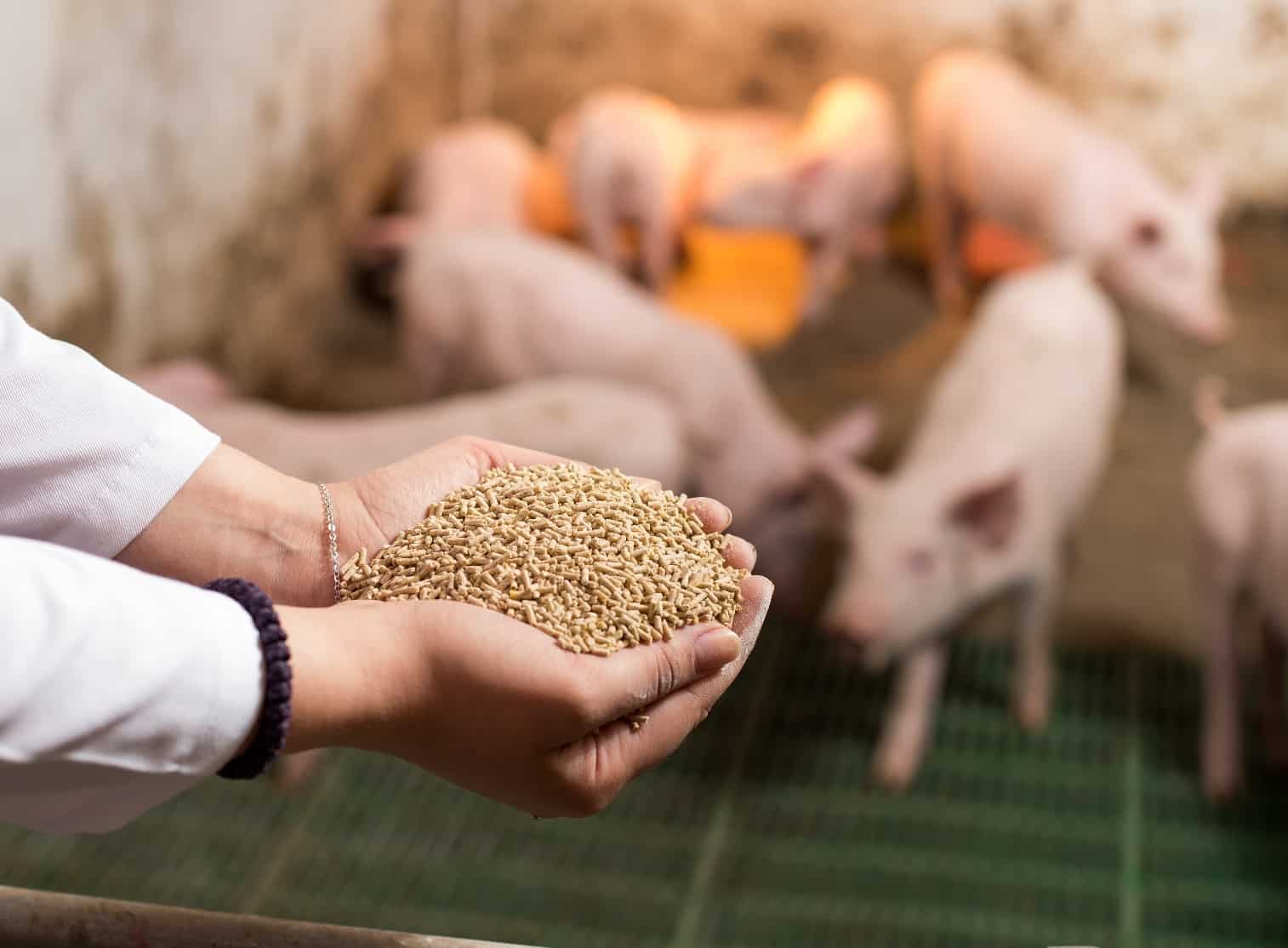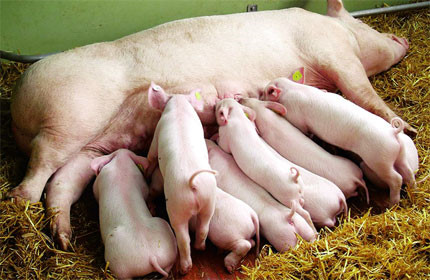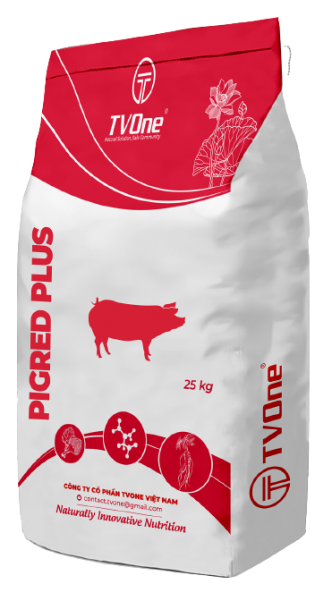In Vietnam, there are also many pig breeds, including economic hybrids, so that farmers can choose the right breed for their production. In particular, 3-blood crossbred pork [Duroc x (Landrace x Yorkshire)] has attractive colour and texture, good meat quality and high protein content, compared to commercial 2-blood crossbred pigs Landrace x Yorkshire. Of course, 3-blood crossbred has better quality than the rest of the commercial.

Pigs are usually raised for 5-6 months and they can reach a weight of 95 - 105 kg. This moment is when the meat quality reaches its best and most beautiful. Raising for a longer period will not be beneficial because feed efficiency begins to decrease. Pigs accumulate much fat, making the meat less delicious than before.
Raising pigs is usually divided into two stages; each stage will have different nutritional standards.
The growing stage is from 60 to 105 days old and the pigs have an average weight of 20 - 60 kg. This is the period when the body develops the skeleton, muscle and nervous system, so the diet needs a lot of protein, minerals, and vitamins to develop the body's length and height.
Lack of nutrients in this stage makes the skeleton underdeveloped. Therefore, the muscle system does not develop, leading to pigs becoming short, having less meat and smaller muscle; fat in the later stage is more easily accumulated. Excess nutrients increases livestock costs.
Excess protein is eliminated in the form of urea polluting the environment and pigs are prone to arthritis and premature fat accumulation. In addition, excessive protein can cause some digestive diseases in pigs. Farmers should feed pigs according to diets with 16-18.5% crude protein and energy 3100-3150 Kcal.
The finishing stage is from 106 to 160 days old and pigs have an average weight of 61 - 105 kg. This period is when pigs fatten up the muscle fibres and connective tissues, so pigs will grow horizontally and become fat. At this stage, pigs will need more glucose and lipid than in the previous stage. In contrast, there is less need for protein, minerals, and vitamins. Lack of nutrients makes pigs thin and have rigid muscles; lack of necessary flavours and light colour meat are not attractive to consumers. Unnecessary nutrients at this time only increase the cost of feed and the amount of fat. At this stage, farmers should use feed with crude protein from 13 - 15%, energy 2950 - 3050 kcal.
Feed quality has a direct influence on pork quality at slaughter. If the ration contains much bad fat, the meat will be greasy, easily liquefied and rancid when refrigerated for a long time (the fat of bad fishmeal will give the meat a fishy smell and be less popular). In addition, farmers can add additives to the feed to enhance the quality of pork, especially those of plant origin. Plant-based additives will affect the muscle gradually, not as massively as chemical substances, thereby making pigs grow safely and pork eaters also benefit.
Feeding techniques In the earlier stage, the pig's body will develop some muscle cells and in the remaining stage, it will develop the cell size. Therefore, in the early stages, we need to feed pigs with a free amount according to their needs to help pigs maximize the number of cells. Nevertheless, in the later stages, we feed pigs limited amounts to restrain the fat cell formation process. This will help reduce the cost of the pig herd and increase the lean percentage Feeders should be arranged enough for the number of pigs in the herd to limit uneven feeding. Feed intake should be divided several times a day to increase feed efficiency.

Farmers can train pigs with an hourly feeding reflex to increase digestion. While feeding, we should also monitor each animal's health status and feeding ability in the cage. In addition, we must also pay attention to the quality of the feed, which needs to be nutritious and not contaminated with mycotoxins. Caring techniques After weaning, we conduct piglets into batches and herds for convenient care and nurturing. In dividing the herd, it is necessary to avoid letting pigs separate the herd and tear each other apart. The appropriate density ranges from 10-35 kg with 0.4 - 0.5 m^2/head to 35 - 100 kg with 0.8 m^2/head.

The barn must be airy. If there is a ventilation system, it is necessary to adjust the fan speed to suit each season to avoid stuffiness. The barn floor is always dry and has a good drainage slope, so we can avoid slippery or rough and limit the waste in the farming area. The direction of the barn should follow the northeast-southwest direction to obtain bright sunlight and vitamin D and avoid unfavourable sun directions, rain and drafts. We should not plant shade trees near the barn, although it is good during the day. However, at night, if the air is condensed and there is no wind, the trees will breathe and release CO2, which will also adversely affect the health of pigs. The recent trend of high-yield pig farms is to bathe pigs only when necessary because bathing the pigs will increase the thickness of the back fat layer (this is the pig's response to cold water). As a result, pigs will lose more energy and the quality of the meat stall will not meet the requirements for the lean percentage.
TVOne Vietnam has successfully researched and produced a set of products to increase productivity and quality of pork of all natural origin, ensuring safety factors for human health and optimizing livestock costs. . In which, there are 2 products that help to increase the quality and productivity of pork:
PIGRED PLUS - Helps pigs with pink skin, smooth hair, beautiful natural red meat, anti-oxidant, completely natural product.
RAMIL GP - Helps increase feed intake during carcass production and improves the function of energy and protein metabolism, helping pigs grow well throughout the life cycle.
Especially, create uniform muscle, reduce excess fat, increase lean meat, help red and beautiful meat not become mushy and dehydrated (PSE). Stimulating appetite, and stimulating growth, increasing immunity, increasing ADG, decreasing FCR.
 |
 |
RAMIL GP
|
PIGRED PLUS
|





